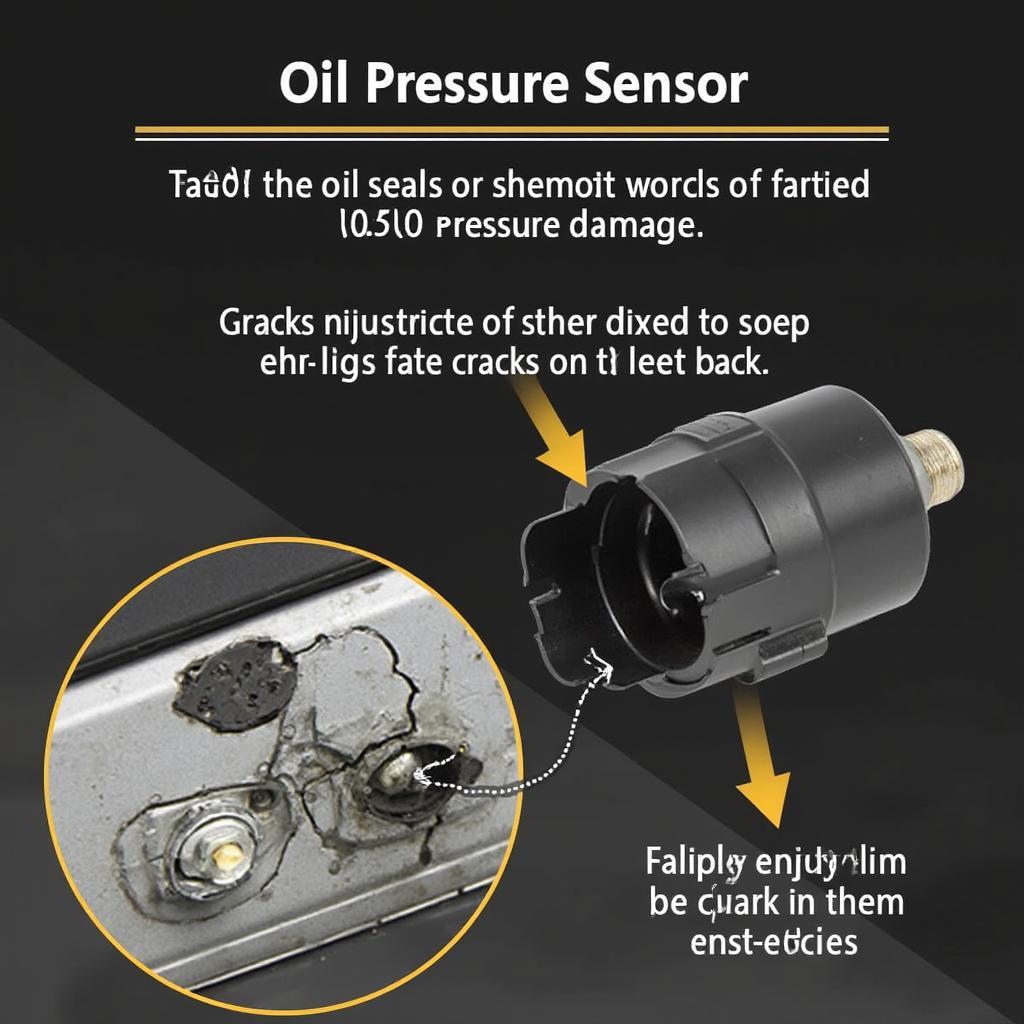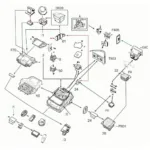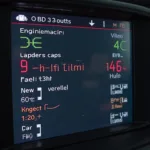The OBD2 code P0520, indicating “Engine Oil Pressure Sensor/Switch Circuit Malfunction,” can be a source of concern for any driver. This code signals a problem with the electrical circuit related to your engine’s oil pressure sensor, not necessarily the oil pressure itself. Understanding this code, its causes, symptoms, and diagnostic procedures is crucial for maintaining your vehicle’s health. Let’s delve into everything you need to know about the P0520 code.
The P0520 code refers to a problem within the electrical circuit of the oil pressure sensor or switch. This critical component monitors the oil pressure in your engine and relays this information to the engine control module (ECM). A malfunctioning circuit can disrupt this communication, leading to potential engine damage if left unaddressed. Don’t panic if you see this code; understanding the issue is the first step to resolving it. Check out our obd2 year auto page to see if your vehicle is OBD2 compliant.
What Does the P0520 Code Mean?
The P0520 code specifically signifies an issue with the circuit of the oil pressure sensor/switch, not necessarily low oil pressure. This distinction is important. The code suggests a problem in the wiring, connector, sensor itself, or the ECM’s interpretation of the signal.
Understanding the Oil Pressure Sensor/Switch System
The oil pressure sensor/switch is a vital part of your engine’s monitoring system. It measures the pressure of the oil being pumped throughout the engine and sends a signal to the ECM. This information helps the ECM regulate engine functions and alert the driver if there’s a problem.
What Causes the P0520 Code?
Several factors can trigger the P0520 code:
- Faulty Oil Pressure Sensor/Switch: The sensor itself can malfunction due to wear and tear, exposure to extreme temperatures, or internal damage.
- Wiring Issues: Damaged, corroded, or loose wiring within the sensor circuit can disrupt the signal transmission.
- Connector Problems: A loose, dirty, or damaged connector can prevent proper electrical contact.
- Low Oil Level: While not directly causing the P0520, low oil can contribute to sensor malfunction and trigger other related codes.
- Faulty ECM: In rare cases, the ECM itself might be malfunctioning, misinterpreting the sensor signal.
 Faulty Oil Pressure Sensor Leading to P0520 Code
Faulty Oil Pressure Sensor Leading to P0520 Code
Symptoms of the P0520 Code
Besides the illuminated check engine light, other symptoms might accompany the P0520 code:
- Fluctuating or Inaccurate Oil Pressure Gauge: The oil pressure gauge might display erratic readings or indicate incorrect oil pressure levels.
- Oil Pressure Warning Light: The oil pressure warning light might illuminate, even if oil levels are adequate.
- Engine Performance Issues: In severe cases, you might experience reduced engine performance or even engine stalling.
How to Diagnose the P0520 Code
Diagnosing the P0520 code involves a systematic approach:
- Retrieve Codes: Use an OBD2 scanner to retrieve all stored trouble codes. This helps identify any related issues. Learn more about this specific code on our obd2 code po520 page.
- Inspect Wiring and Connectors: Visually inspect the wiring and connectors for any signs of damage, corrosion, or looseness.
- Check Oil Level: Verify that the engine oil level is within the recommended range.
- Test Oil Pressure Sensor: Use a multimeter to test the sensor’s resistance and voltage output.
- Check ECM: If all other components check out, the ECM might need to be tested by a qualified technician.
What to Do if You Encounter the P0520 Code?
If your OBD2 scanner reveals the P0520 code, it’s essential to address the issue promptly. Ignoring the problem could lead to significant engine damage. Consider the following steps:
- Consult a Mechanic: If you’re not comfortable performing diagnostic procedures yourself, consult a qualified mechanic. They have the expertise and tools to diagnose and resolve the problem accurately.
- Replace Faulty Components: Based on the diagnosis, replace any faulty components, such as the oil pressure sensor, wiring, or connector.
“Addressing the P0520 code swiftly is crucial,” says John Smith, Senior Automotive Technician at Smith Automotive. “Ignoring this issue can lead to costly repairs down the road.”
Conclusion
The OBD2 code P0520 highlights a potential problem with your engine’s oil pressure sensor/switch circuit. Understanding this code, its potential causes, and how to diagnose it is crucial for maintaining your vehicle’s health. By taking prompt action, you can prevent further damage and ensure your engine runs smoothly. Remember, addressing the P0520 code is a proactive step towards protecting your investment and ensuring a safe and reliable driving experience.
FAQ
- What does the P0520 code mean? It indicates a malfunction in the engine oil pressure sensor/switch circuit.
- Is the P0520 code serious? Yes, ignoring it could lead to engine damage.
- Can I drive with the P0520 code? It’s best to have it diagnosed and repaired promptly.
- What are the common causes of P0520? Faulty sensor, wiring issues, or connector problems.
- How do I fix the P0520 code? Replace faulty components or consult a mechanic.
- What are the symptoms of the P0520 code? Check engine light, fluctuating oil pressure gauge, or oil pressure warning light.
- How much does it cost to fix the P0520 code? It depends on the specific cause and the labor costs.
“Regular maintenance is key to preventing issues like the P0520 code,” advises Jane Doe, Certified Mechanic at Doe’s Auto Repair. “Keeping up with oil changes and inspections can help identify potential problems before they become major headaches.”
For further assistance, contact our 24/7 support team via WhatsApp: +1(641)206-8880, Email: [email protected], or visit us at 789 Elm Street, San Francisco, CA 94102, USA.

